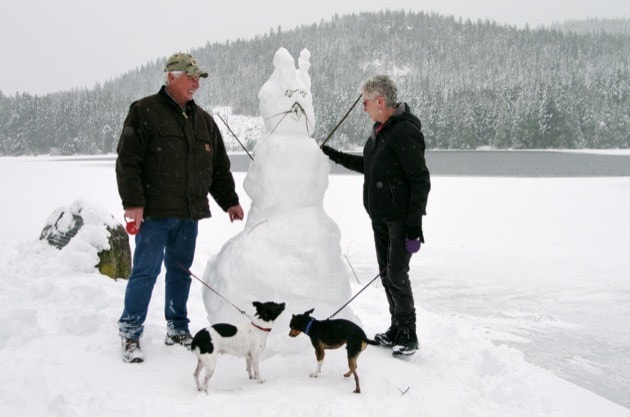Blame La Niña, not the weatherman, for Nanaimo’s harsh winter weather.
Nanaimo braced for heavy snowfall Wednesday morning. The Pacific storm carrying the precipitation was predicted to bring warm air to thaw the city with temperatures as high as 10 Celsius by Tuesday (Feb. 14), warming noses and hearts for Valentine’s Day.
In October, meteorologists predicted a seasonally “normal” winter with average rainfall and slightly colder-than-normal temperatures. What unfolded was several weeks of subfreezing temperatures, snow and ice.
“Our skill with long-term forecasting is not always fantastic, but sometimes it is,” said Armel Castellan, Environment Canada meteorologist.
Winter’s severity depends the Pacific Ocean’s El Niño-La Niña cycle. An El Niño is when warm Pacific Ocean water accumulates along the west coast of south America.
La Niña is when cold water accumulates in the same region. In recent years, the “blob,” a large mass of unusually warm water that accumulated along much of the coast of North America helped create a record El Niño in 2015. A crucial key to predicting seasonal weather lies in being able to “see” these cycles forming.
This winter the “blob” dissipated and a weak La Niña formed, which means colder water in the east Pacific and colder winter temperatures in North America.
“In the past we’ve had weak La Niñas that haven’t materialized into colder-than-normal months or seasons, whereas this year we certainly did,” Castellan said.
The mean temperature for January was 1.8 C; normal is 3.5 C. December’s mean temperature was just 0.6 C, compared to a normal mean temperature of 3.1 C. The two months aren’t record breakers, but they do rank among the coldest recorded.
“Even though we were hedging our bets for normal, we were following a weak La Niña, so … even though it was not strong enough to call it a colder-than-normal winter, there was a possibility it would start colder than normal, and in fact that’s exactly what happened,” Castellan said.
The snow storm that started Thursday kept city road crews working round the clock just to keep main roads clear.
Brad McRae, city chief operations officer, said at a city council meeting Monday that snow came in waves, forcing plow drivers who’d just finished clearing a primary or secondary road to immediate loop back around to keep the road clear.
Snow accumulation on side streets also forced the city to temporarily cancel curbside waste collection Tuesday, but the city resumed collection again Wednesday.
